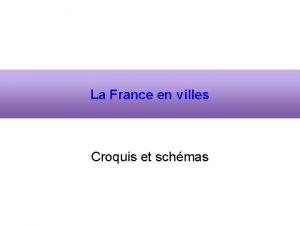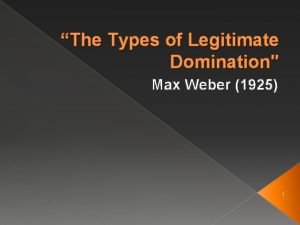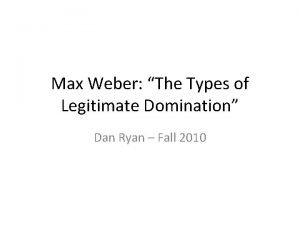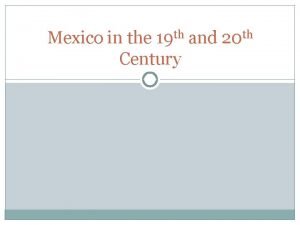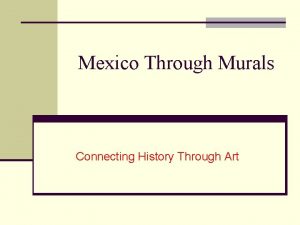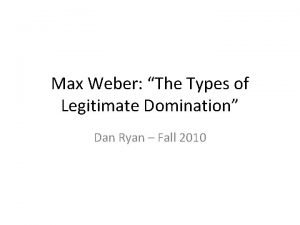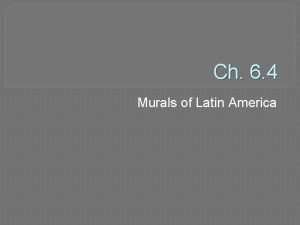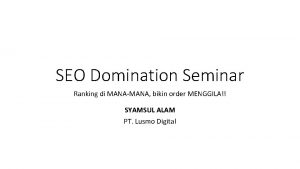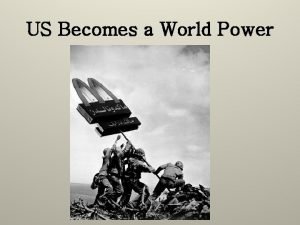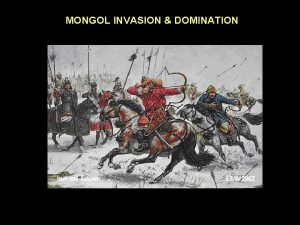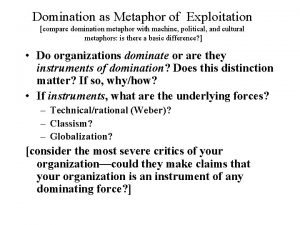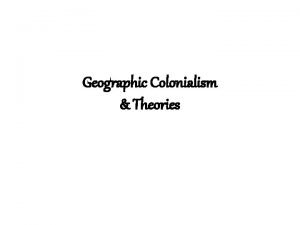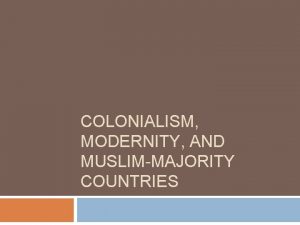Colonialism Political social economic cultural domination of a
















- Slides: 16

Colonialism Political, social, economic, cultural domination of a territory and its people by a foreign power for an extended period of time

2 MAJOR PHASES OF EUROPEAN COLONIALISM l l l PHASE 1: 1490 s— 1820 s Spain & Portugal colonized Central, South, and North America Britain colonized North America, India, Australia (1788), parts of the Caribbean Dutch colonized South Africa, Singapore l France colonized Canada, parts of the Caribbean l 1800 s: Independence Movements began

TRANS-ATLANTIC SLAVE TRADE: 1600— 1800 l Europeans captured West African slaves (in exchange for guns, alcohol, tobacco, etc. ) l Shipped them to the Americas and Caribbean Islands to work on plantations (sugar, cotton, tobacco, coffee) l Beginning of the Global Plantation Economy

2 MAJOR PHASES OF EUROPEAN COLONIALISM PHASE 2: 1850 s— 1950 s l Western Europe colonized Africa, the rest of Asia, and the Pacific Islands l 1914: Britain and French Empires were at their height; EU Empires controlled 85% of world! l 1950 s: Independence Movements started to succeed

RACE 1. CULTURAL CONSTRUCTION No biological basis, although there is often an assumed biological commonality such as shared genes or “blood” n Race categories change over time and vary from place to place 2. GENETIC EVIDENCE Proves that there are more differences within so-called “races” than between them

RACE (cont. ) 3. PHENOTYPE (physical expression of genes) n Many societies define “race” by phenotype, such as: skin color, hair form, facial features, eye color n But…the lines of distinction are not clear n The MEANING of the phenotypic features is culturally constructed

Putting Cultural Ideas into Practice PREJUDICE Devaluing a group because of assumed behavior, values, capabilities, etc. DISCRIMINATION Policies and practices that harm a group and its members RACISM Discrimination against a group assumed to have biological commonality

AFRICA

AFRICA CONTINENT with regions (North, South, East, West) 1776 -1870: Colonized by Europe and US during last phase of colonialism 1807: Britain abolished slave trade 1834: Britain abolished slavery & established “legitimate trade” in cash crops, turning subsistence economies into “mono crop” economies

AFRICA 1884: “Scramble for Africa” at the Berlin Conference on West Africa 1884 -1912: 5 EU nations—Germany, Italy, Portugal, France, Britain ( + Spain, Belgium) sliced Africa up like a pie Most African nations fought for and won independence from their colonizers in the mid-1900 s 1960: Niger became independent from France

NIGER

NIGER Straddles the Sahara & Sahel Deserts Fragile environment of semi-arid brush Farming: shifting cultivation Pre-colonial Economy: trans-Saharan trade in livestock, agricultural products Colonial Economy: cowpea trade (cash crop) Vulnerable to drought & unreliable global commodity markets

NIGER Size: about twice size of TX, 1 of hottest countries in the world Capital: Niamey 2005 population estimate = 11. 6 million Ethnic Groups: Hausa 56%, Djerma 22%, Fula 8. 5%, Tuareg 8%, Beri (Kanouri) 4. 3%, Arab, Toubou, & Gourmantche 1. 2%, about 1, 200 French expatriates Life Expectancy = 42 years Resources: gold, uranium, coal, iron ore, tin, cowpeas, cotton, peanuts, millet, cassava, and rice

NIGER ECONOMY Exports: uranium ore, livestock products, cowpeas, onions Imports: consumer goods, machinery, vehicles and parts, gasoline, cereal 2000: Qualified for enhanced debt relief under the International Monetary Fund (IMF) program for Highly Indebted Poor Countries (HIPC) Reduces Niger's annual debt: frees funds for basic health care, primary education, HIV/AIDS prevention, rural infrastructure, and other programs Half Niger’s budget: from foreign donor resources Future growth: may be sustained by exploitation of oil, gold, coal, and other mineral resources

NIGER POLITICS 1993: held first free and open elections 1996 & 1999: military coups led by Tuaregs 1999: National Reconciliation Council facilitated transition to civilian rule Since 1999: President of the Republic, Mamadou Tandja

NIGER RELIGION 80%: Muslim 20%: Christian & indigenous beliefs Fusion of the Worlds: How do the Songhay turn to their indigenous worldview and practices in order to “talk back to” the impending crises of drought and living in poverty?
 Puritans england
Puritans england Pest political economic social technological
Pest political economic social technological Forces behind management thoughts
Forces behind management thoughts Routinization of charisma definition
Routinization of charisma definition La domination macrocéphalique de paris
La domination macrocéphalique de paris Domination technique
Domination technique The types of legitimate domination
The types of legitimate domination Different types of domination
Different types of domination Colonial domination diego rivera
Colonial domination diego rivera Colonial domination diego rivera
Colonial domination diego rivera Colonial domination diego rivera
Colonial domination diego rivera The types of legitimate domination
The types of legitimate domination 8 methods of tax attorney domination - indorecipe
8 methods of tax attorney domination - indorecipe Colonial domination diego rivera
Colonial domination diego rivera Interviewer domination
Interviewer domination Textmechanic delimited column extractor
Textmechanic delimited column extractor Valeriano weyler
Valeriano weyler




